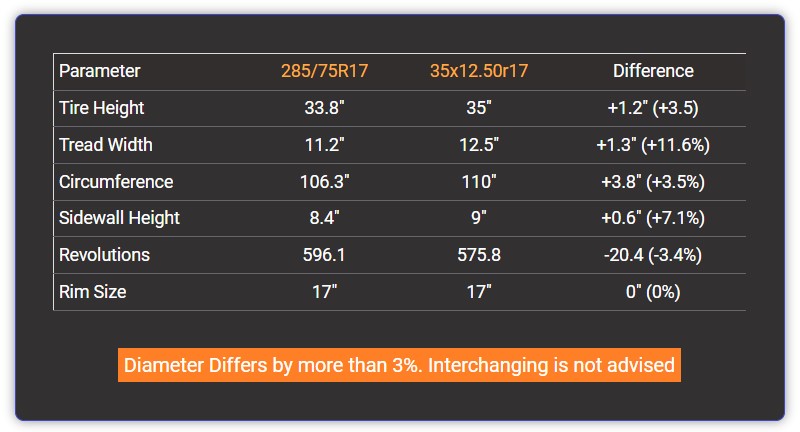Tire Size 285/75R17 vs 35×12.50r17
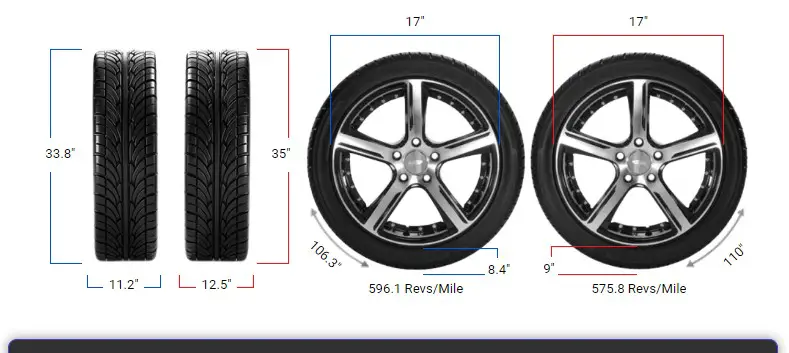
Are you considering upgrading your 285/75R17 tires to a larger 35×12.50R17 size? While this switch can offer some benefits, it’s important to understand the key differences and potential impacts before making the change.
- Increased ground clearance for better off-road performance
- Improved traction and stability, especially in off-road conditions
- Slight reduction in fuel economy due to larger size and weight
- Potential for improved ride comfort with taller sidewall
285/75R17 vs 35×12.50r17
This comparison table will help you to understand the difference between at a glance.
Fitment Guide
The new set should be within 3% of the original tire’s diameter. In this case, the 35×12.50R17 tires exceed the recommended 3% difference compared to the 285/75R17 size.
While the switch is possible, it may require adaptations to prevent rubbing or clearance issues.
Ground Clearance
With a diameter of 35.03 inches, the 35×12.50R17 provides 1.2 inches more ground clearance than the 33.83-inch 285/75R17.
This added clearance benefits off-road driving by preventing scrapes over obstacles. However, the larger 35-inch tire causes a lower speedometer reading than the 285/75R17.
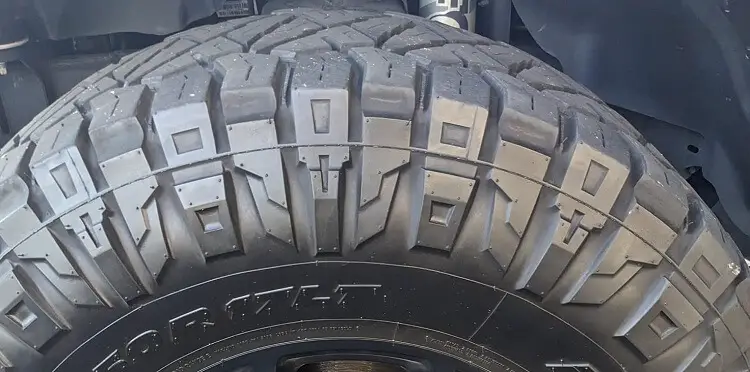
Gas Mileage
The 285/75R17’s slightly smaller contact patch and rotational mass offer better fuel efficiency, which is crucial for daily driving and long trips.
The 35-inch tire’s larger diameter and width increase rolling resistance and rotational weight, negatively impacting mileage.
Ride Comfort
The 35×12.50R17’s extra sidewall height and larger air volume provide superior impact absorption for a comfortable off-road ride.
But the 285/75R17 may offer a smoother on-road ride with its shorter sidewall and smaller contact patch.
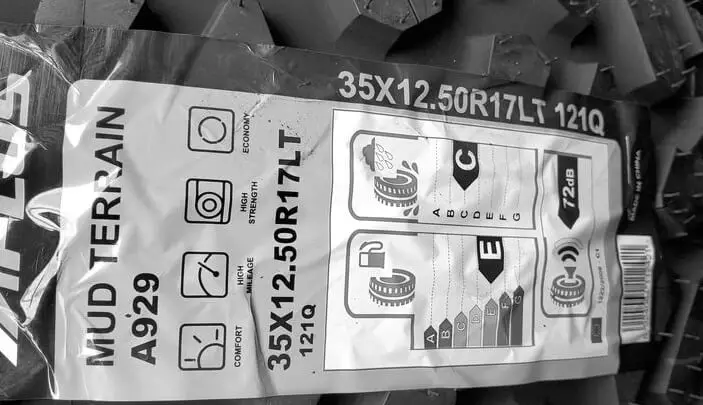
Aesthetics
The lower-profile 285/75R17 contributes to aerodynamics, while the 35-inch tire has an aggressive, lifted stance. Subjectively, the 35×12.50R17’s taller sidewall suits trucks aesthetically.
Handling & Stability
The 285/75R17’s shorter sidewall enhances responsiveness and handling precision on the pavement. But the 35-inch tire’s extra flex provides stability and traction advantages off-road and on loose surfaces.
Noise & Vibration
The 285/75R17 transmits more road noise and vibration with its stiffer sidewall. The 35-inch tire’s added air volume and flexible sidewall help isolate the cabin from noise and vibrations.
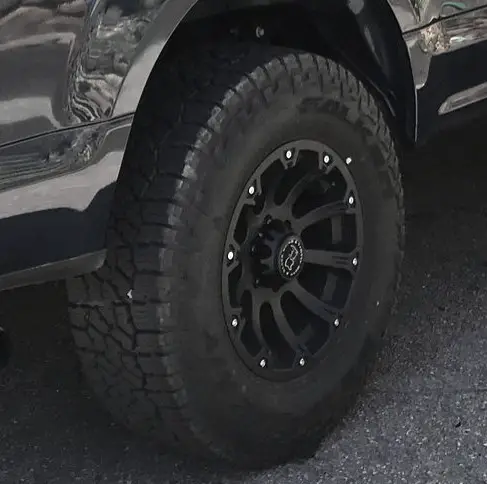
Durability & Wear
The 285/75R17 exhibits more even treadwear and potentially longer life. But the larger 35-inch tire withstands off-road impacts better, albeit adding stress to components.
Adverse Conditions
The 285/75R17’s narrower tread effectively cuts through snow, but the 35-inch tire provides better muddy traction with its wider footprint. Both perform well overall.
Speedometer Difference
At an actual speed of 20 mph, the 285/75R17 equipped vehicle’s speedometer reads 20 mph.
But with 35×12.50R17 tires, the speedometer reads 20.71 mph due to the larger diameter. This speedometer difference of 0.71 mph is noticeable but not severe between the sizes.
What is the Main Difference Between 285/75R17 and 35×12.50R17?
The main difference between 285/75R17 and 35×12.50R17 tires is their overall diameter, with the 35×12.50R17 being 1.2 inches (30.42 mm) or 3.5% larger than the 285/75R17.
Can I Use 35×12.50R17 Instead of 285/75R17?
While it is possible to use 35×12.50R17 tires instead of 285/75R17, the 3.5% difference in diameter exceeds the recommended 3% range, which may necessitate adaptations to prevent rubbing or clearance problems.
How Much Taller Is a 35×12.50R17 Tire Than a 285/75R17?
A 35×12.50R17 tire is approximately 1.2 inches (30.42 mm) taller than a 285/75R17 tire, representing a 3.5% increase in overall diameter.

How Much Wider is a 35×12.50R17 Tire Than a 285/75R17?
A 35×12.50R17 tire is 1.3 inches (33 mm) wider than a 285/75R17 tire, which equates to an 11.6% increase in tire width.
Our Observation
While switching from 285/75R17 to 35×12.50R17 tires offers several benefits, especially for off-road use, it’s crucial to consider the potential drawbacks.
The 3.5% difference in tire diameter exceeds the recommended 3% range, which can affect speedometer accuracy and fuel economy. However, the impact on ride comfort and handling may be negligible for most drivers.
Ultimately, the decision to upgrade depends on your specific needs and priorities, whether you value off-road performance or prefer to maintain optimal on-road characteristics.

Meet Caitlin McCormack, a Tire Size Expert and Blogger Passionate About Everything Related to Tires. With Years of Experience in the Tire Industry, Caitlin Has Become an Expert in Tire Sizes and Their Impact on Vehicle Performance.

